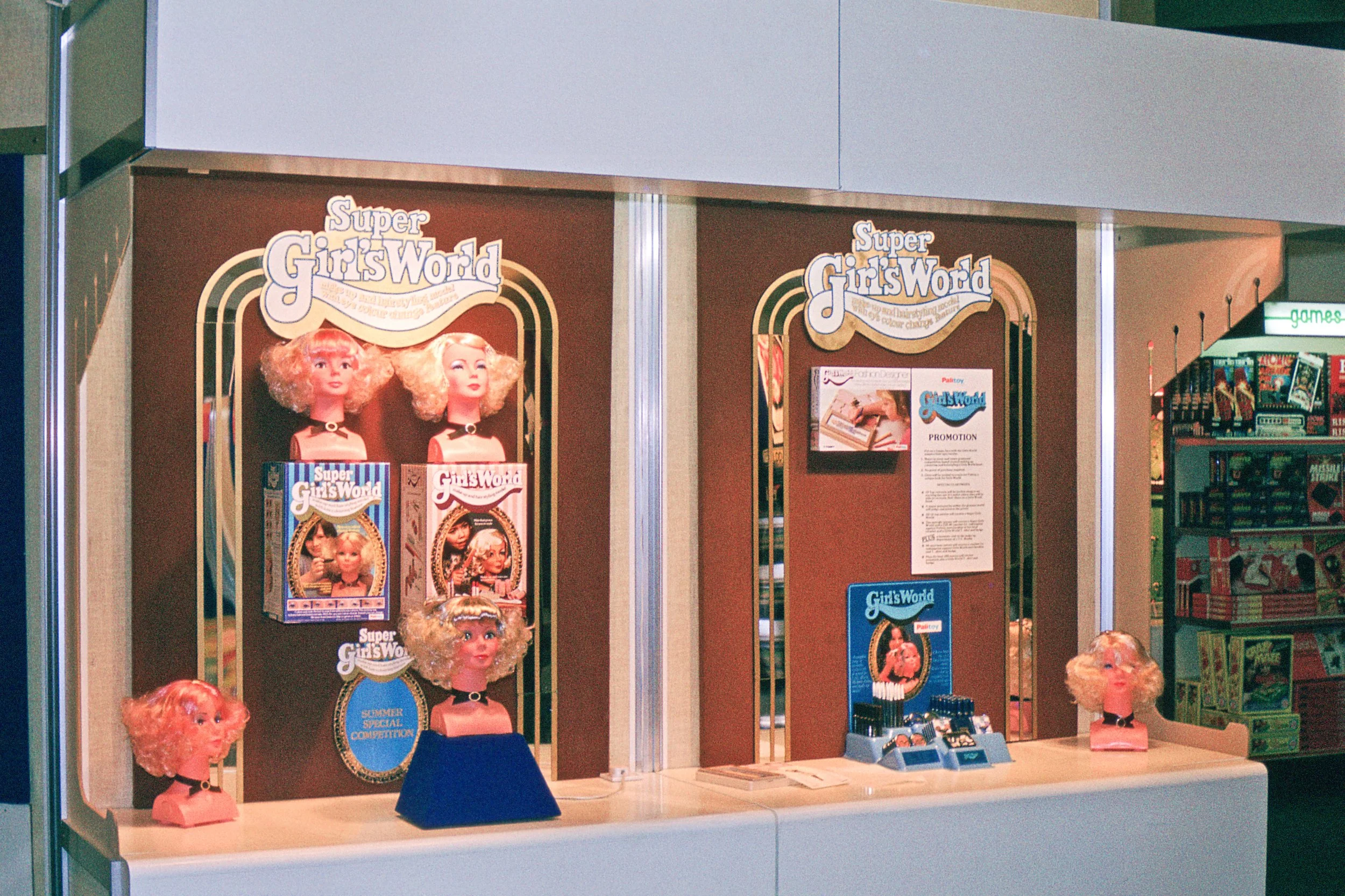Commemorating Palitoy Design Legend, Stuart Moore (1937–2025)
Stuart Moore (standing) presents the revolutionary Tiny Tears sculpt, c. 1964. Flanking him are the talented team who brought the doll to life: Dress Designer Ann Warburton, Design Manager Bill Pugh, and Packaging Manager Ken Moore.
The world of vintage toys is mourning the loss of a true visionary. On Sunday, October 12th, 2025, Stuart Moore, the innovative sculptor and designer who spent decades shaping the product line of the beloved British company Palitoy, passed away.
Stuart Moore’s career is a masterclass in toy design, defined by a commitment to realism and an ability to translate creative concepts into commercially successful, cherished playthings. While his name may not be instantly recognisable to the general public, his work defined the childhoods of generations—specifically, he is known as the design genius behind the iconic Tiny Tears doll.
From Modelmaker to Design Manager
Moore's journey into the heart of British toy history began in 1953 when he joined Cascelloid straight out of school, starting as a modelmaker at their Leicester factory. Cascelloid, established in 1919 and later bought by British Xylonite Limited, had already registered the popular Palitoy Playthings name and was expanding its focus on dolls and toys.
After a brief, compulsory break for National Service, Stuart returned to the burgeoning company and quickly transitioned to sculpting new dolls for the growing Palitoy brand. This was a critical era for the manufacturer; by the early 1960s, Palitoy began to separate its Toy Division and ramp up its development and marketing efforts, becoming one of the first British companies to embrace TV advertising for toys.
It was during this time that Moore worked on key releases, notably providing the newly sculpted head for the American-licensed doll Tressy, famous for her "growing hair" feature—a doll that was one of Palitoy’s first big TV-advertised hits.
This display honours both the doll line—with Stuart Moore’s Tiny Tears taking Best Girls’ Toy—and the flagship Action Man securing the Best Boys’ Toy and overall Toy of the Year awards for 1966.
The Birth of Tiny Tears
While Palitoy already had success with the popular crying/wetting doll Patsy, Stuart Moore was tasked with a complete modernisation project that would solidify his legacy. Utilising the newly acquired registered name, Moore set out to sculpt and engineer the modern Tiny Tears.
Moore’s redesign was revolutionary. He not only created a fresh, contemporary look for the doll but also overhauled the mechanical function. Crucially, he refined the mechanism so that the doll’s tears emerged realistically from the eyes, not from small holes beside the nose. However, the most significant change was one of motion: Stuart designed the doll's limbs to "flop like a real baby," a simple yet brilliant detail that delivered a sense of genuine lifelike weight. This design was so successful that the accompanying TV slogan declared her "the most lifelike baby doll in the world!"
A glimpse of Palitoy's doll section at a late 1970s Toy Fair. As Doll Design Manager, Moore oversaw the creative output for major lines visible here, including Tressy, Carrie, and the fashion doll Pippa.
Beyond the Dolls
Moore's expertise wasn't limited to his flagship creation. As he rose to Doll Design Manager, he oversaw and personally sculpted numerous other successful dolls, including smaller iterations like Teeny Tiny Tears and Teeny Weeny Tiny Tears. Other notable entries under his creative guidance included Carrie, the popular Winnie the Pooh doll, and the colossal hit of the 1970s, Girls World, the ultimate hair-styling and make-up sensation.
The breadth of his talent is perhaps best demonstrated by his involvement in two of Palitoy’s most legendary products:
Pippa: He was a significant member of the design team that launched this enduring fashion doll line.
Action Man: Moore even contributed to Palitoy’s flagship action figure line, most famously designing the intricate set piece, Secret Mission to Dragon Island.
Striker: His mechanical ingenuity also extended to games, where he was the creative mind behind the "kicking footballer" feature in the Striker action game.
Though the Palitoy design department closed in 1984, Stuart Moore continued his work as a sculptor and designer in Leicester until his retirement. He helped the esteemed sculptor Sir Eduardo Paolozzi with some his artworks.
His ultimate testament lies in the enduring appeal of his creations; the Tiny Tears design has been so robust that it has survived multiple producers and iterations, and remains available in toy shops today.
We extend our deepest sympathies to his family, friends, and the countless fans whose childhoods he made truly magical.
A Tiny Tears Toy Fair display, circa late 1970s. This vibrant exhibit—packed with accessories and different product lines—is solid evidence of the remarkable commercial longevity and popularity of Stuart Moore’s original 1960s redesign.
The Girls World display at a late 1970s Toy Fair. This immense commercial hit—the perfect convergence of makeup, hair-styling, and play—was another iconic product sculpted and developed under the watch of Doll Design Manager Stuart Moore.
The Palitoy display for Carrie and Christopher dolls, c. late 1970s. This line highlights the breadth of products that were designed and developed under the creative direction of Stuart Moore.
Esteemed Palitoy alumni. Pictured (L to R): Stuart Moore (Designer of Tiny Tears), Brian Turner (Display Manager/Designer), Bob Brechin (Chief Designer), and Ken Woolhouse (Process Engineer). Their collective brilliance created the wonderful toys that made our childhoods so great.






